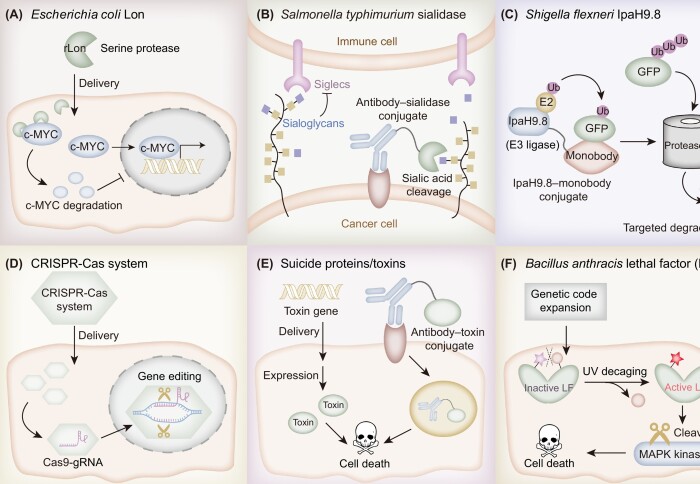Using bacterial toolkits to power research

Bacteria have evolved a diverse set of enzymes to enable survival within host cells. We reviewed their application in chemical biology research
Imperial College London researchers from the Tate group have collaborated with colleagues from Chongqing University to review the powerful toolkits provided by bacterial enzymes, published here in Trends in Biotechnology.
Due to their unique mechanisms of action, these enzymes have been developed as tools to explore a variety of biological processes, including the identification of protein modification sites, elucidation of signalling pathways and therapeutic discovery. This review highlights the current use of these enzymes in chemical biology research, and provides an analysis of their strengths and limitations in comparison to chemical methods.
The functionalisation of proteins through post-translational modifications is a key facet of chemical biology research and drug discovery. This review details the many bacterial enzymes that have been used in vitro and in vivo to catalyse the site-specific incorporation of substrates for further functional analysis, or engineered to a protein of interest to act as tags in order to visualise protein trafficking and localisation. The recent development of cellular systems where engineered bacterial enzymes - that catalyse biotinylation - are fused to the protein of interest has allowed for the analysis of interaction networks arising from the proximity-dependent labelling of nearby proteins. Furthermore, a discussion of the bacterial enzymes that have deconvoluted complex mammalian signalling pathways and revolutionised modern medicine is included, with examples such as the engineered CRISPR Cas9 endonuclease, which is able to introduce specific base edits in vivo as a therapeutic strategy for genetic disorders. Whilst further optimisation is required to improve their scope and use in vivo, the bacterial enzymes described above and in this review represent powerful tools, and we envisage that an improved understanding of the bacterial proteome will identify novel effectors which will expand the capabilities of chemical biology research in the future.
Congratulations to our collaborators and Dr Janine Gray for this publication!
Article supporters
Article text (excluding photos or graphics) © Imperial College London.
Photos and graphics subject to third party copyright used with permission or © Imperial College London.
Reporter
Edward Bartlett
Department of Chemistry